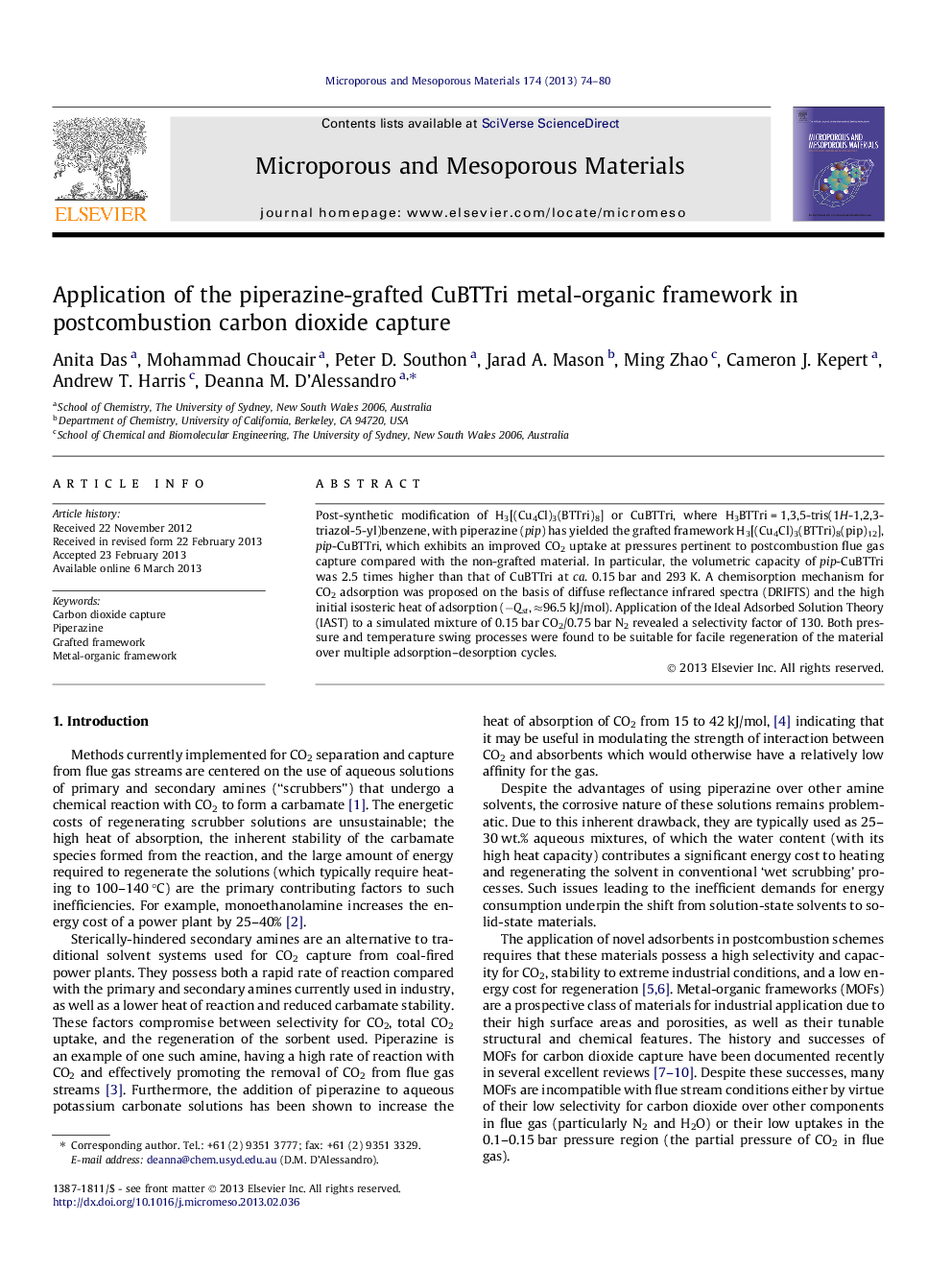| کد مقاله | کد نشریه | سال انتشار | مقاله انگلیسی | نسخه تمام متن |
|---|---|---|---|---|
| 73638 | 49066 | 2013 | 7 صفحه PDF | دانلود رایگان |

Post-synthetic modification of H3[(Cu4Cl)3(BTTri)8] or CuBTTri, where H3BTTri = 1,3,5-tris(1H-1,2,3-triazol-5-yl)benzene, with piperazine (pip) has yielded the grafted framework H3[(Cu4Cl)3(BTTri)8(pip)12], pip-CuBTTri, which exhibits an improved CO2 uptake at pressures pertinent to postcombustion flue gas capture compared with the non-grafted material. In particular, the volumetric capacity of pip-CuBTTri was 2.5 times higher than that of CuBTTri at ca. 0.15 bar and 293 K. A chemisorption mechanism for CO2 adsorption was proposed on the basis of diffuse reflectance infrared spectra (DRIFTS) and the high initial isosteric heat of adsorption (−Qst, ≈96.5 kJ/mol). Application of the Ideal Adsorbed Solution Theory (IAST) to a simulated mixture of 0.15 bar CO2/0.75 bar N2 revealed a selectivity factor of 130. Both pressure and temperature swing processes were found to be suitable for facile regeneration of the material over multiple adsorption–desorption cycles.
Figure optionsDownload as PowerPoint slideHighlights
► Sorption isotherm of the appended framework suggests improved affinity for CO2.
► Molar and volumetric capacities of the framework exhibit similar profiles.
► Polarising amine sites selectively enhance CO2 sorption over N2.
► Improved CO2 uptake not directly related to steric hindrance in secondary amines.
► Selectivity enhancement due to chemisorption between CO2 and secondary amine.
Journal: Microporous and Mesoporous Materials - Volume 174, 1 July 2013, Pages 74–80